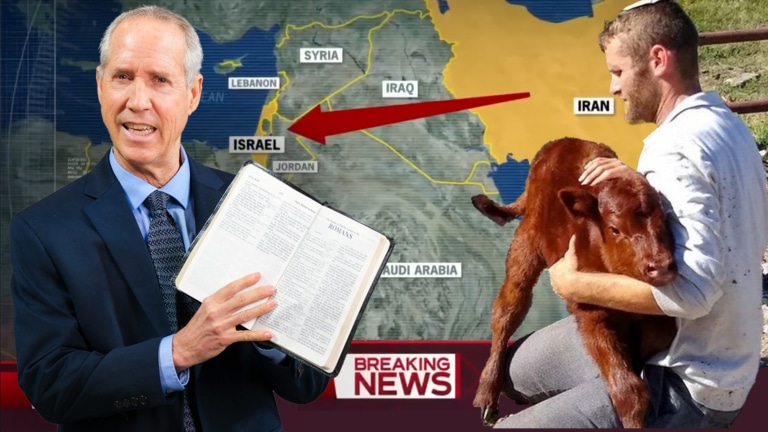A man who has committed a mistake and doesn’t correct it is committing another mistake.
– Confucius (551-479 B.C.)
The concept of a seven-year Tribulation is the underlying foundation of the entire Left Behind scenario (and all other pro-rapture books and movies). The theory is: rapture first, then seven years of horror.
Book Two of the Left Behind novels declares, “The disappearances have ushered in the seven-year period of Tribulation” (The Tribulation Force, inside cover). Book Three reveals, “…the seven-year Tribulation is nearing the end of its first quarter…” (Nicolae , inside cover). Book Six tells us, “It’s the midpoint of the seven-year Tribulation” (The Indwelling, inside cover). Book Eight begins with, “…the dawn of the second half of the seven-year Tribulation” (The Mark, inside cover). Book Eleven opens “six years into the Tribulation, two and one-half years into the Great Tribulation” (Armageddon, p. vii). Thus this New York Times , USA-Today , and Wall Street Journal bestselling series of end times, prophecy books, endorsed by well-respected church leaders worldwide, is built entirely around this seven-year framework.
Where does this “seven-year” concept come from anyway? It may shock you, but if you look for “seven years of tribulation” in any concordance, you won’t find it. The truth is, from Genesis to Revelation, there is no exact passage that specifically mentions a seven-year period of tribulation at all. Amazingly, the entire theory is really based on a rather speculative interpretation of two little words in one single verse. The text is Daniel 9:27; and the two words are, “one week.” Let me explain.
The Book of Daniel was written while the Jews were in Babylon—in exile because of their sins. Daniel 9:24-27 contains a prophecy from the angel Gabriel to encourage the Jewish people that they would be given a “second chance” to return to Jerusalem, rebuild their temple, and ultimately, receive their Messiah (Jesus Christ). This highly controversial prophecy literally reads:
Seventy weeks are determined upon thy people and upon thy holy city, to finish the transgression, and to make an end of sins, and to make reconciliation for iniquity, and to bring in everlasting righteousness, and to seal up the vision and prophecy, and to anoint the most Holy. Know therefore and understand, that from the going forth of the commandment to restore and to build Jerusalem unto the Messiah the Prince shall be seven weeks, and threescore and two weeks [62 weeks] : the street shall be built again, and the wall, even in troublous times. And after threescore and two weeks shall Messiah be cut off, but not for himself: and the people of the prince that shall come shall destroy the city and the sanctuary; and the end thereof shall be with a flood, and unto the end of the war desolations are determined. And he shall confirm the covenant with many for one week: and in the midst of the week he shall cause the sacrifice and the oblation to cease, and for the overspreading of abominations he shall make it desolate, even until the consummation, and that determined shall be poured out upon the desolate (Daniel 9:24-27 KJV).
Thus we have a prophecy about “seventy weeks.” Gabriel then subdivides the period into three smaller periods of seven weeks (verse 25), sixty-two weeks (verse 25), and one week (verse 27). 7+62+1=70.
Seventy weeks = 490 days. A day in prophecy represents a year (see Numbers 14:34 and Ezekiel 4:6). Thus 490 days are really 490 years. Without going into all the chronological details here (I will get more specific in a later chapter), the prophecy starts with a direct “commandment to restore and to build Jerusalem” (verse 25) after the Babylonian captivity and reaches down to the first coming of Jesus Christ. After 69 weeks (after 483 years), “shall Messiah be cut off” (verse 26). All Christian scholars apply this to the crucifixion of Jesus Christ. After our Lord’s agonizing death, “the people of the prince that shall come shall destroy the city and the sanctuary” (verse 26). While there are differences of opinion as to who “the people of the prince” refers to, the majority of scholars nevertheless apply the destruction of “the city and the sanctuary” to the second destruction of Jerusalem and its rebuilt sanctuary by Roman armies under Prince Titus in 70 A.D.
So far, we have seen 69 weeks fulfilled. That leaves “one week” left, otherwise known as the famous “70th week of Daniel.” Again, that highly controversial text literally says:
And he shall confirm the covenant with many for one week: and in the midst of the week he shall cause the sacrifice and the oblation to cease… (Daniel 9:27 KJV).
Based on the day-year principle (which is valid), the “one week” remaining in this prophecy must refer to a period of seven years . Pro-rapture promoters claim this is the seven-year period of tribulation. Their idea is that while the first 69 weeks (or 483 years) did reach to the first coming of Jesus Christ, the prophetic clock has stopped because the Jewish people largely rejected Him. Then they slide the 70th week (the last seven years) all the way down to the end times, call it the tribulation, and say it applies to the Jewish people after we’re gone.
Rapture teachers interpret Daniel 9:27 as follows:
(1) “He shall confirm the covenant with many for one week.” “He” is the antichrist who will make a covenant (or peace treaty) with the Jews during the seven years of tribulation.
(2) “In the midst of the week he shall cause the sacrifice and the oblation to cease…” In the middle of the seven-year tribulation, the antichrist will break his covenant, turn against Israel, and stop their animal sacrifices.
(3) The phrase, “he shall cause the sacrifice…to cease” is viewed as irrefutable proof that a Jewish temple (which includes sacrifices) must be rebuilt on the Temple Mount inside Jerusalem.
Bestselling author Hal Lindsey in his The Late Great Planet Earth reflects this current view when he writes about “God’s last seven years of dealing with the Jewish people before the long awaited setting up of the kingdom of God (Daniel 9:27).” (The Late Great Planet Earth, p. 46) According to Mr. Lindsey, during those seven years ” ‘the Antichrist,’ breaks his covenant with the Jewish people and causes the Jewish temple worship, according to the Law of Moses, to cease (Daniel 9:27)…We must conclude that a third Temple will be rebuilt upon its ancient site in old Jerusalem.” (Ibid.)
Therefore, according to countless modern interpreters, Daniel 9:27 is applied to a future antichrist, a future peace treaty made with Israel, a future seven-year tribulation, and a future rebuilt Jewish temple inside Jerusalem. And all of this will supposedly start with the rapture. Honestly, that’s a lot to interpret from that single verse, especially when Daniel 9:27 says absolutely nothing about any seven-year tribulation, antichrist, or rebuilt Jewish temple!
Could there be something wrong with this picture?
You’ll find out in the next chapter.
Taken from Chapter 4 of Steve Wohlberg’s book, End Time Delusions: The Rapture, the Antichrist, Israel, and the End of the World.






